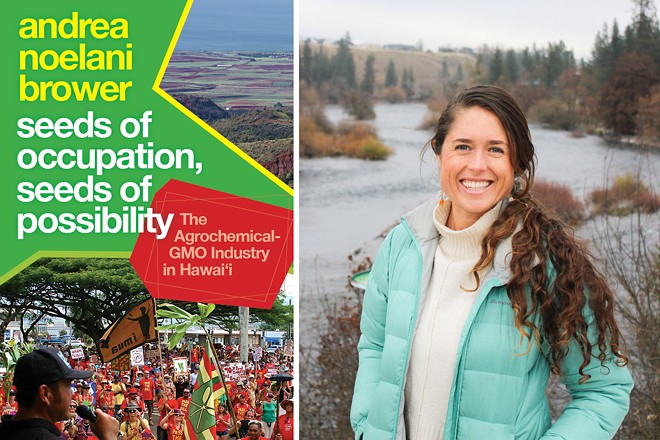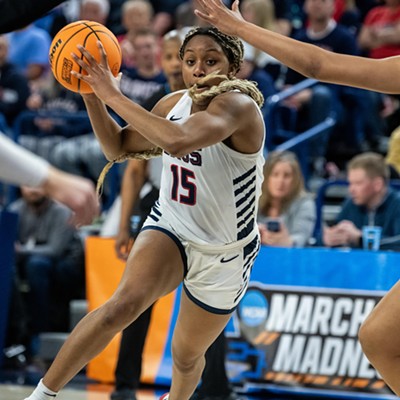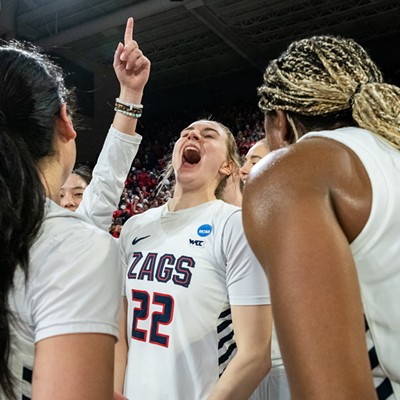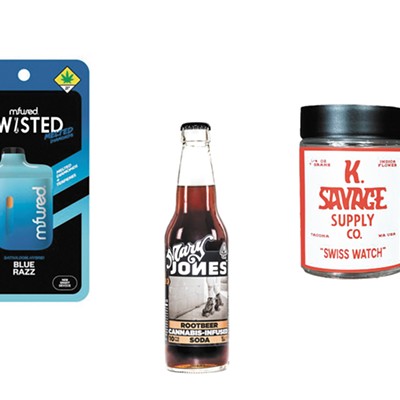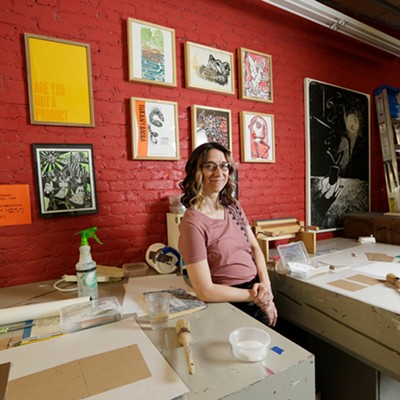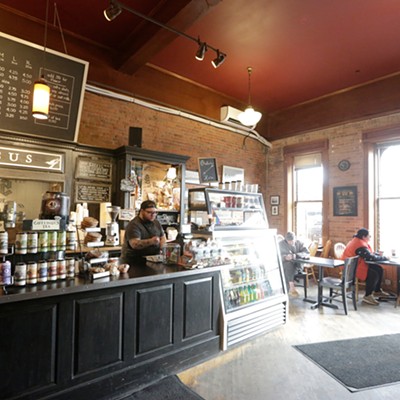On the isolated islands of Hawaii, many crops thrive in year-round growing seasons. However, as successful as this climate seems for many plants, from papayas to corn, the big agricultural-chemical companies helping them grow don't want people to know much about their operations.
Examining the corruption in such companies is the focus of Gonzaga University professor Andrea Brower's book, Seeds of Occupation, Seeds of Possibility: The Agrochemical-GMO Industry in Hawai'i. Brower also explores the success of grassroots activists in passing local and federal legislation to protect their home from harmful agricultural chemicals.
Brower is set to discuss her book during an April 28 event at Gonzaga. Afterwards, she'll discuss systemic and racial injustices and the intersection of environmental activism with Wendy Thompson, director of Gonzaga's Office of Tribal Relations, and Noralis Rodriguez-Coss, an assistant professor of women's and gender studies.
Born and raised on Kauai, the northernmost Hawaiian island, Brower knew of the agrochem giant Monsanto's presence there, along with other producers of genetically engineered seeds and herbicides like Corteva, ChemChina and BASF.
"All you know is there's pesticides blowing into your house every day, and that's where we started, really, with this struggle," Brower says. "We didn't even know what was being sprayed."
Upon returning to Kauai in 2013, Brower learned of a city council measure seeking to better inform locals of the environmental and health impacts of these companies' projects.
"Our bill asked for very simple things: For them to tell us what they were spraying, for them to put very modest pesticide buffer zones around schools and homes, and to do an environmental impact statement eventually on their operations," she says.
In Seeds of Occupation, Seeds of Possibility, Brower offers an in-depth history of agrochem industries in Hawaii and their dominance over genetically engineered seed production across the U.S.
"The vast majority of what's happening in Hawaii is field tests on herbicide-resistant crops because as these crops are failing, weeds are evolving to be resistance to these chemicals," Brower says. "The industry's response has been to engineer new crops that are able to withstand multiple pesticides put into the same mixture, and more toxic pesticides."
Many of the companies operating in Hawaii are based near marginalized communities and on public lands and waters that were dispossessed and stolen from Native Hawaiians.
"On the west side of Kauai where they occupy thousands of acres, 6,000 of those acres being so-called public lands, that is one of the largest Native Hawaiian communities in the state," Brower says.
One chemical used regularly is 2,4-D, an active ingredient in Agent Orange, which was used as a defoliant in the Vietnam War and is linked to Parkinson's disease and reproductive issues. Dicamba, linked to multiple cancers and known to be highly prone to drift, is also used.
"The regulatory system in the United States, it doesn't rest on the precautionary principle like in many other places in the world," Brower says. "It doesn't acknowledge that these things are meant to kill and thus we should be cautious with them."
These big agrochem companies have caused health and environmental damage in other states. Monsanto, for example, is responsible for contaminating the Spokane River with PCBs, which led to a recent class-action settlement against the company (see page 15). In Hawaii, though, these chemicals are used year-round, rather than only seasonally in cooler climates.
Brower says much of the research surrounding these pesticides is often skewed, partly due to the agrochemical industry's financial influence over researchers and universities.
"They study only active ingredients from a single pesticide on its own, but in reality, the way they're experienced in the world, they're stacked with many pesticides," she says.
During Brower's work with activists in Hawaii in 2013 and 2014, Monsanto and other corporations poured millions of dollars into advertising campaigns against activists and politicians, and sued to block three ordinances proposed in that time frame in federal court.
Even with all that pushback, in 2018 Hawaii became the first state to ban the neurotoxin chlorpyrifos, linked to a multitude of dangerous health issues. Activists also helped pass rules relating to pesticide disclosure and buffer zones. Multiple states followed suit, and in 2021 the EPA banned chlorpyrifos from being used on food products.
Brower wants her research to be accessible to people advocating for social change in other spheres.
"I think beyond just focusing on this industry," she says, "my hope is that the book is going to inspire a conversation about the root conditions that produce this situation and how we fundamentally challenged those and why social change is absolutely possible." ♦
Andrea Brower: Seeds of Occupation, Seeds of Possibility • Fri, April 28 at 5 pm • Free and open to the public • Gonzaga Humanities Building • 1002 N. Astor St., Room 153 • gonzaga.edu

